Once the trench was finished, it was time to create a berm and plant a border for pollinators. Where once there was crabgrass and plantain, now there is a border including dozens of native perennials and shrubs sourced from Native Plant Trust’s Garden in the Woods, Bluestem Natives, and Four Winds Perennial Care.
The sunnier north-western side of the border gets strong afternoon sun and includes: Verbena hastata (Blue vervain), Agastache foeniculum (Anise hyssop), Pycnanthemum muticum (Clustered mountain mint), Pycnanthemum tenuifolium (Narrow leaved mountain mint), Eutrochium maculatum (spotted Joe-Pye weed), Veronicastrum virginicum (Culver’s root), Vernonia noveboracensis (New York ironweed), Asclepias tuberosa (butterfly milkweed), Monarda fistulas (bee balm), Sporobolus heterolepis (prairie dropseed), fragaria virginiana (wild strawberry), Helianthus divaricatus (woodland sunflower), Sisyrinchium angustifolium (blue-eyed grass), Penstemon digitalis (foxglove beardtoungue).
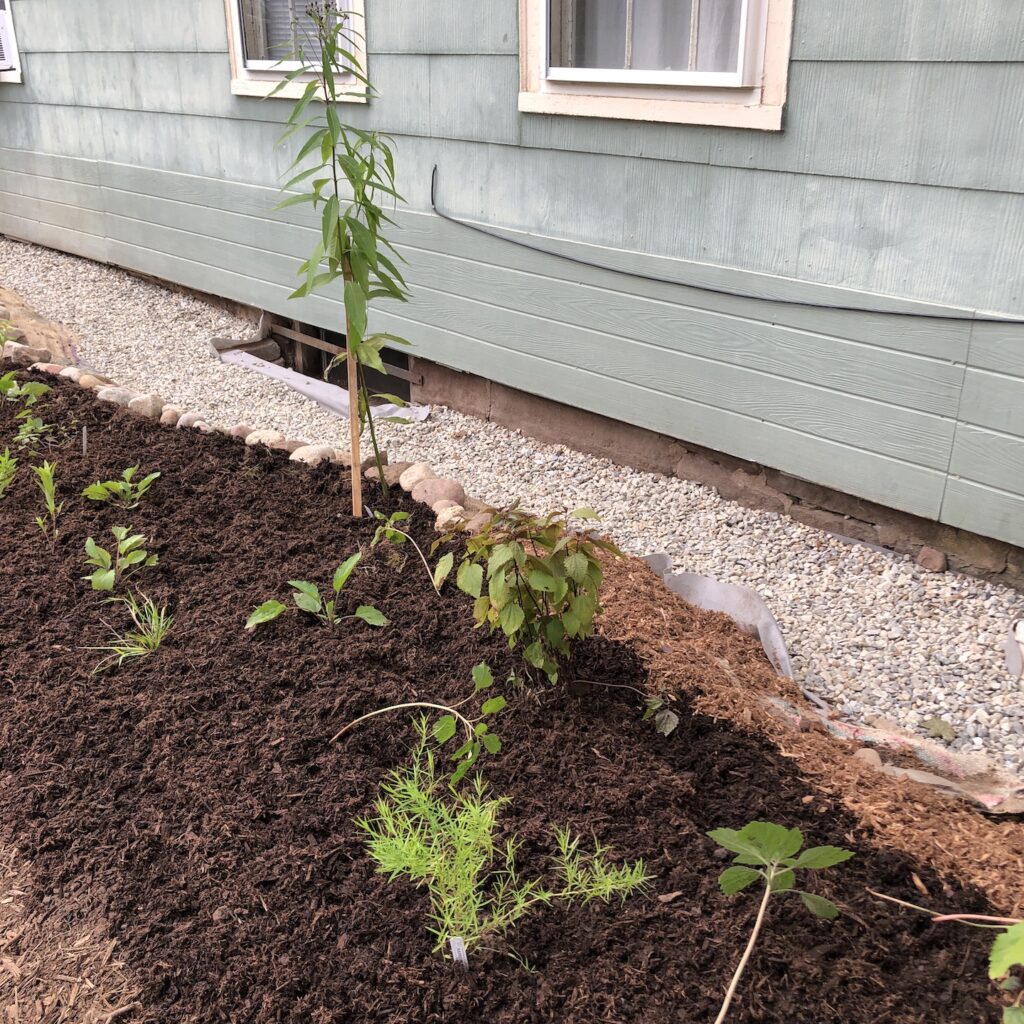
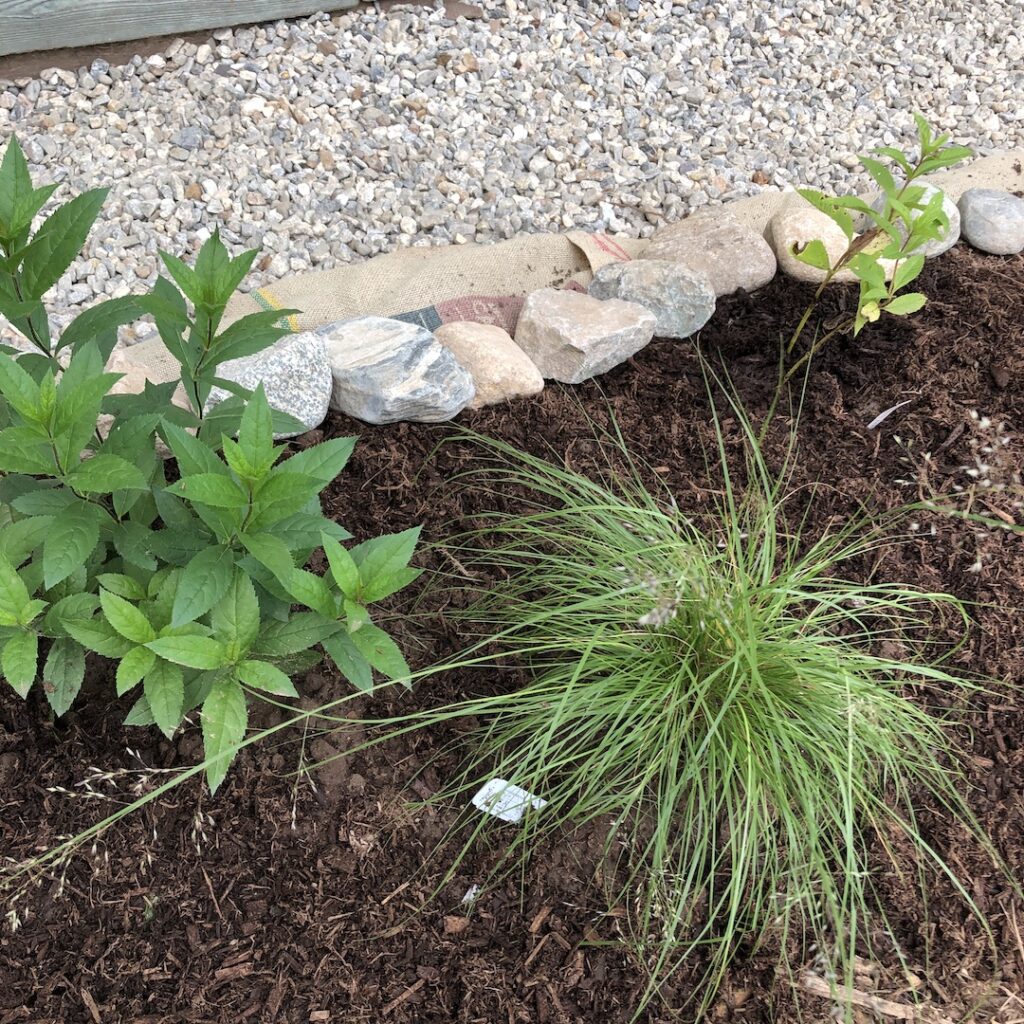
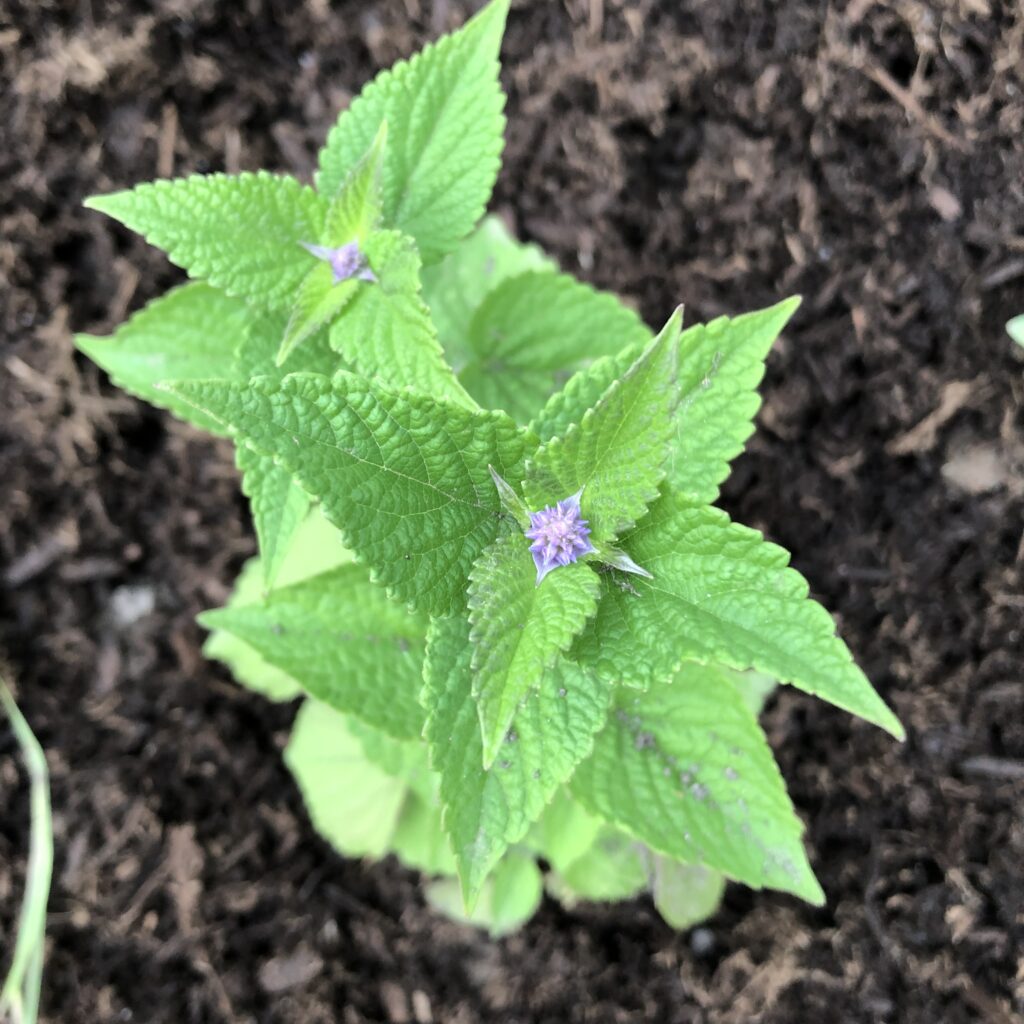
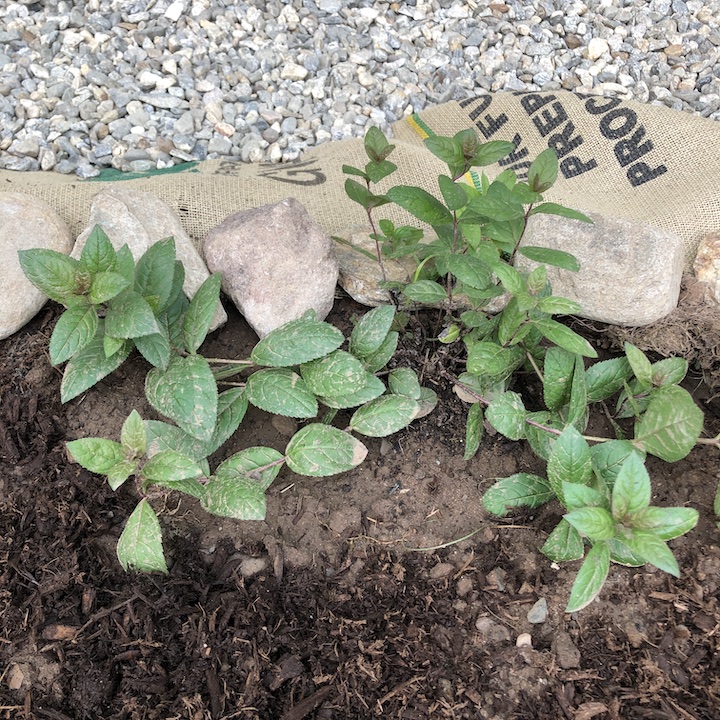
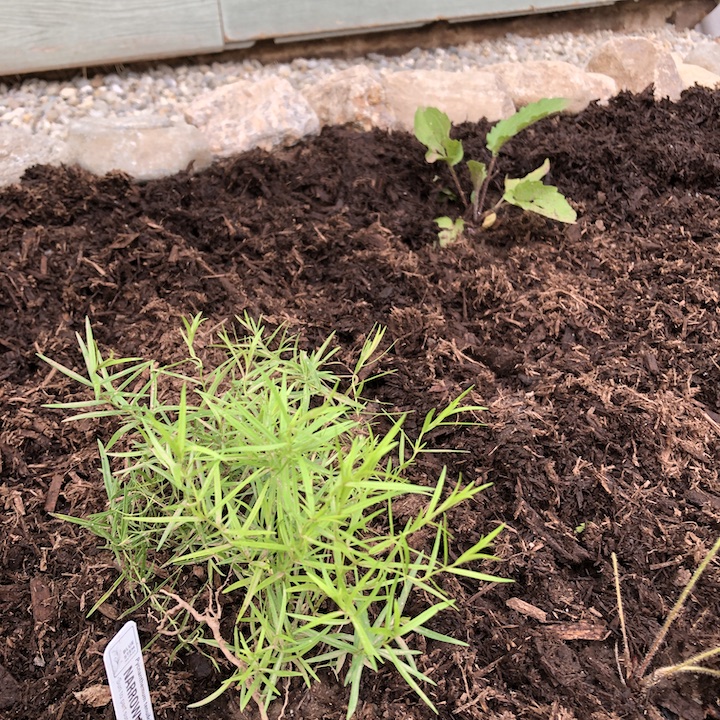
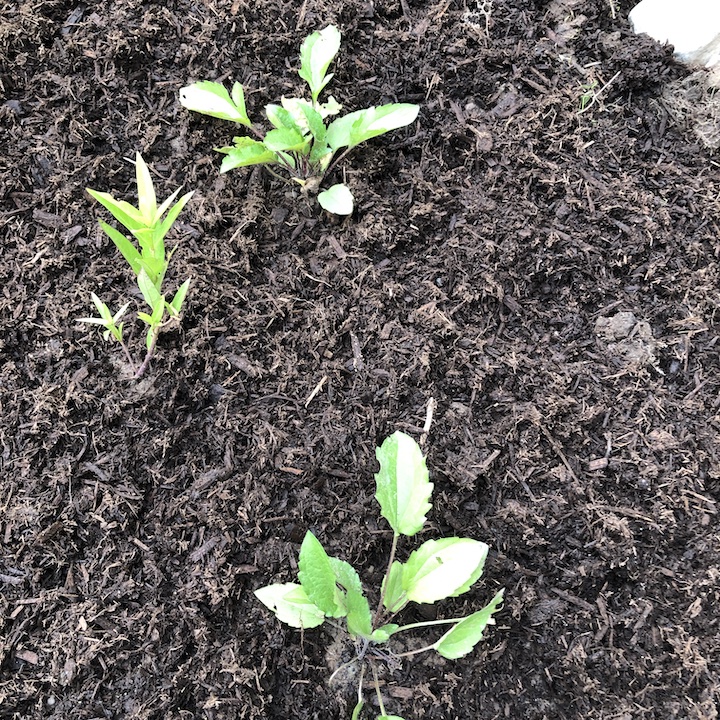
The southern corner is shaded by a street tree and contains more shade-tolerant varieties such as: Ageratina altissima (white snakeroot), Pachysandra procumbens (Allegheny spurge), Rubus odoratus (native red raspberry), and Rhododendron calendulaceum (flame azalea).
To hold the soil on the back side of the berm, I used burlap coffee sacks from Perkatory Coffee Roasters, wood chips from the city’s recycling center, and river rocks.
OMG, thanks. Writing a blog is so much harder than I anticipated!
Thanks, and you’re welcome!
Julie, I am now hooked on your website. I find you inspiring and you motivate. Love your pics.